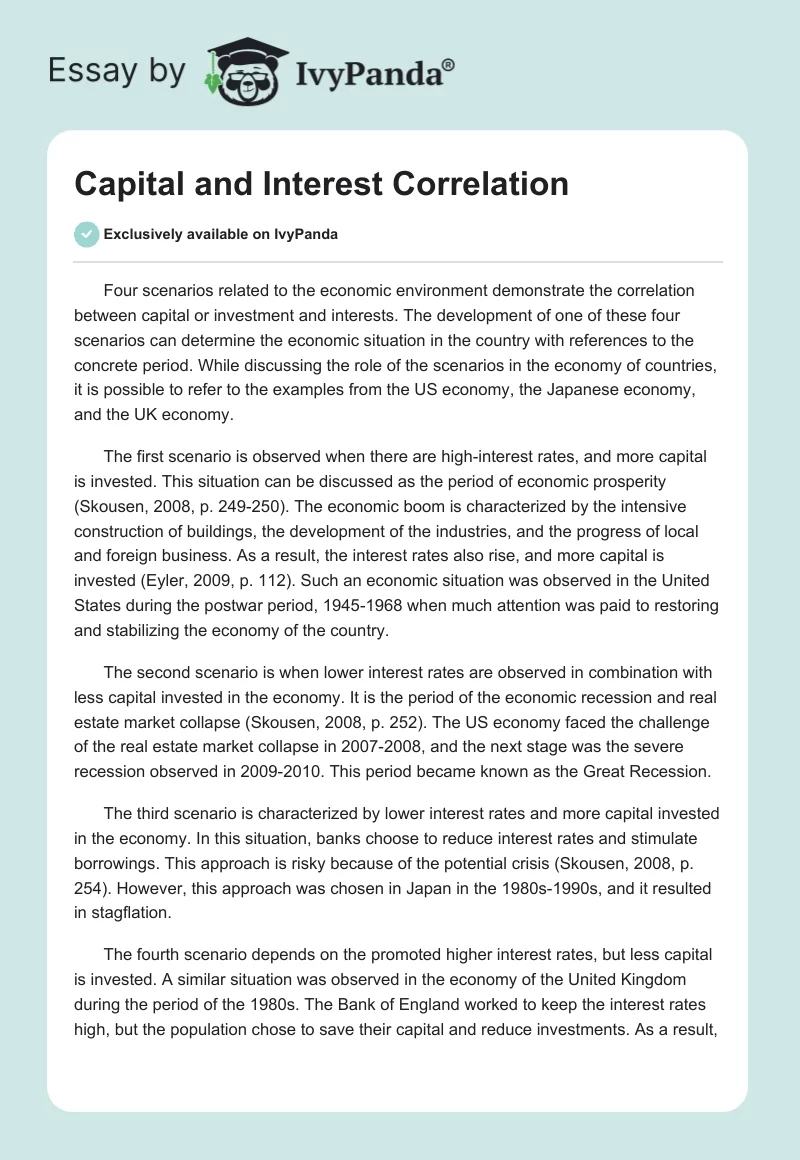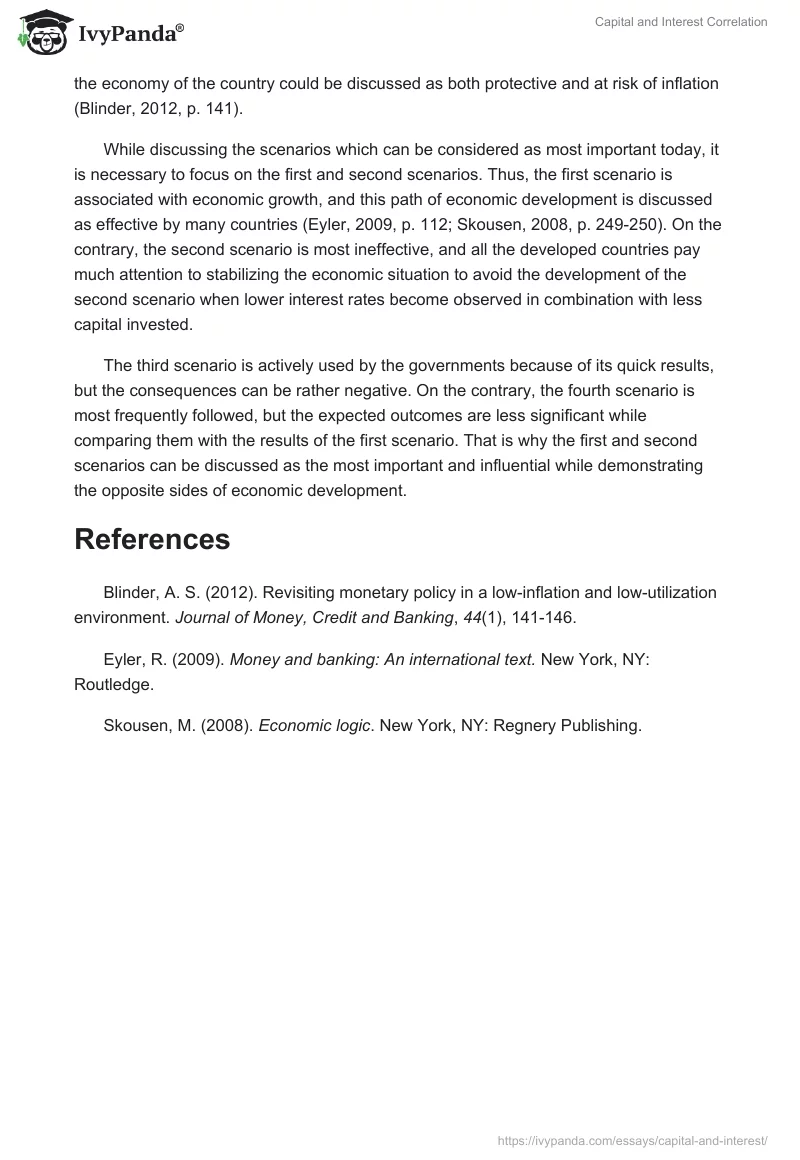Four scenarios related to the economic environment demonstrate the correlation between capital or investment and interests. The development of one of these four scenarios can determine the economic situation in the country with references to the concrete period. While discussing the role of the scenarios in the economy of countries, it is possible to refer to the examples from the US economy, the Japanese economy, and the UK economy.
The first scenario is observed when there are high-interest rates, and more capital is invested. This situation can be discussed as the period of economic prosperity (Skousen, 2008, p. 249-250). The economic boom is characterized by the intensive construction of buildings, the development of the industries, and the progress of local and foreign business. As a result, the interest rates also rise, and more capital is invested (Eyler, 2009, p. 112). Such an economic situation was observed in the United States during the postwar period, 1945-1968 when much attention was paid to restoring and stabilizing the economy of the country.
The second scenario is when lower interest rates are observed in combination with less capital invested in the economy. It is the period of the economic recession and real estate market collapse (Skousen, 2008, p. 252). The US economy faced the challenge of the real estate market collapse in 2007-2008, and the next stage was the severe recession observed in 2009-2010. This period became known as the Great Recession.
The third scenario is characterized by lower interest rates and more capital invested in the economy. In this situation, banks choose to reduce interest rates and stimulate borrowings. This approach is risky because of the potential crisis (Skousen, 2008, p. 254). However, this approach was chosen in Japan in the 1980s-1990s, and it resulted in stagflation.
The fourth scenario depends on the promoted higher interest rates, but less capital is invested. A similar situation was observed in the economy of the United Kingdom during the period of the 1980s. The Bank of England worked to keep the interest rates high, but the population chose to save their capital and reduce investments. As a result, the economy of the country could be discussed as both protective and at risk of inflation (Blinder, 2012, p. 141).
While discussing the scenarios which can be considered as most important today, it is necessary to focus on the first and second scenarios. Thus, the first scenario is associated with economic growth, and this path of economic development is discussed as effective by many countries (Eyler, 2009, p. 112; Skousen, 2008, p. 249-250). On the contrary, the second scenario is most ineffective, and all the developed countries pay much attention to stabilizing the economic situation to avoid the development of the second scenario when lower interest rates become observed in combination with less capital invested.
The third scenario is actively used by the governments because of its quick results, but the consequences can be rather negative. On the contrary, the fourth scenario is most frequently followed, but the expected outcomes are less significant while comparing them with the results of the first scenario. That is why the first and second scenarios can be discussed as the most important and influential while demonstrating the opposite sides of economic development.
References
Blinder, A. S. (2012). Revisiting monetary policy in a low-inflation and low-utilization environment. Journal of Money, Credit and Banking, 44(1), 141-146.
Eyler, R. (2009). Money and banking: An international text. New York, NY: Routledge.
Skousen, M. (2008). Economic logic. New York, NY: Regnery Publishing.


